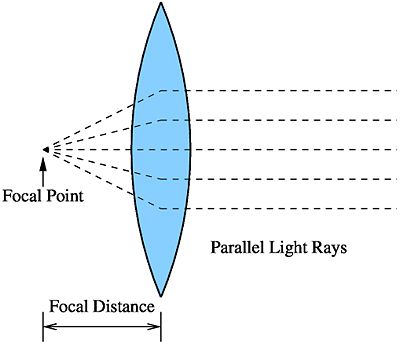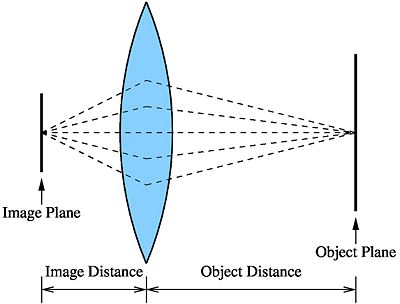Lenses in Optical Imaging Systems
keyword: ECE 637, digital image processing
Some Basic Properties and Assumptions
First let's review some basics about lenses. For these notes, we will discuss lenses assuming the thin lens model (i.e. assume that the thickness of the lens is negligible compared to its focal length).
When parallel light rays are incident upon a biconvex lens, they converge at one point after passing through. This point is called the focal point of the lens. The distance from the optical center of the lens to the focal point is called the focal distance.
Note that the focal distance can be different for the two sides of the lens if the lens is not perfectly symmetric.
We can approximate light rays from a star that is many light years away to be parallel but ideally, for a point source to produce perfectly parallel light rays, it would have to be an infinite distance away from your lens.
Image Formation
Most of your photography subjects however, will not be an infinite distance away. In that case your object's distance from the lens is some finite quantity.
Let $ d_f $ be the focal length of the lens.
Let $ d_o $ be the distance of the object plane from the optical center of the lens.
Let $ d_i $ be the distance of the image plane from the optical center of the lens.
Then we have that
$ \frac{1}{d_o} + \frac{1}{d_i} = \frac{1}{d_f} $



